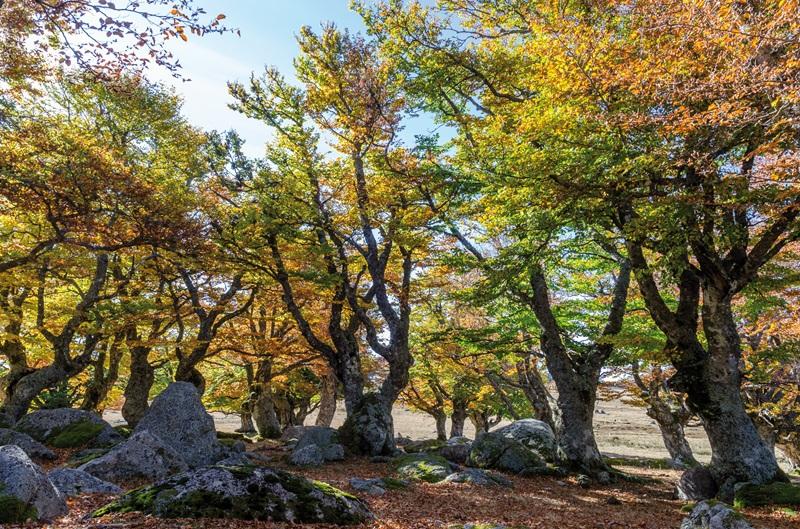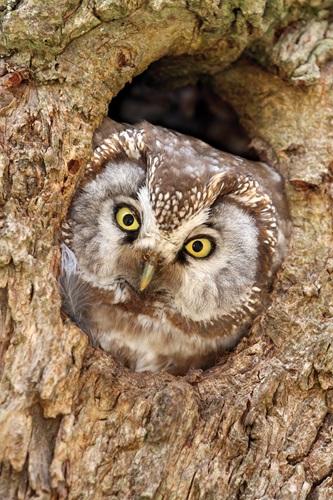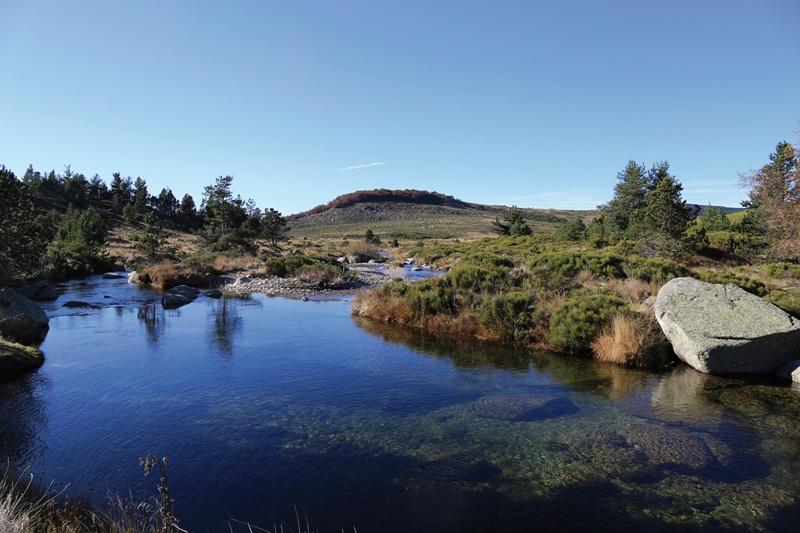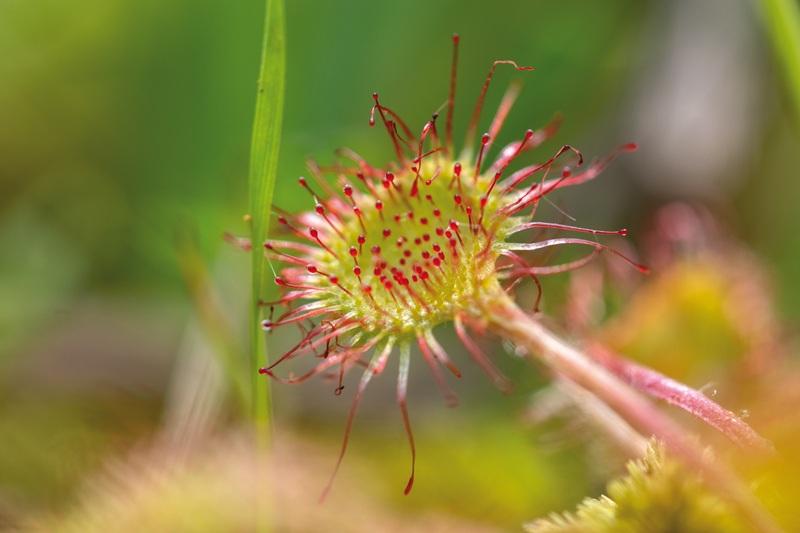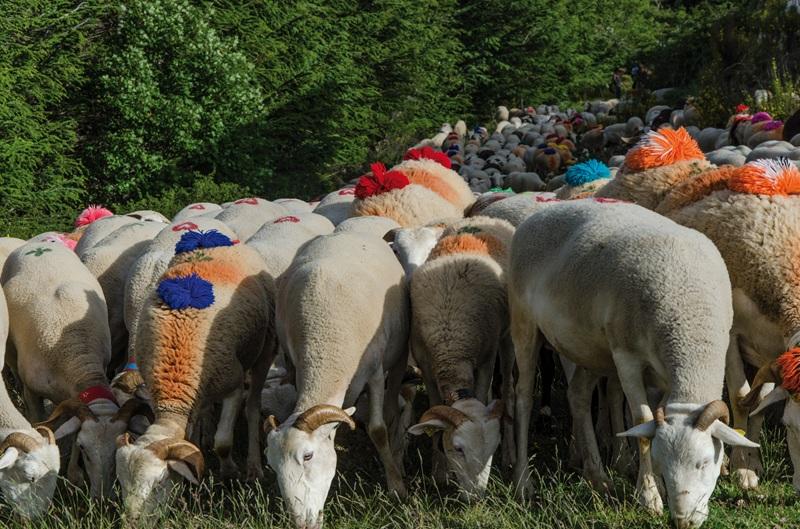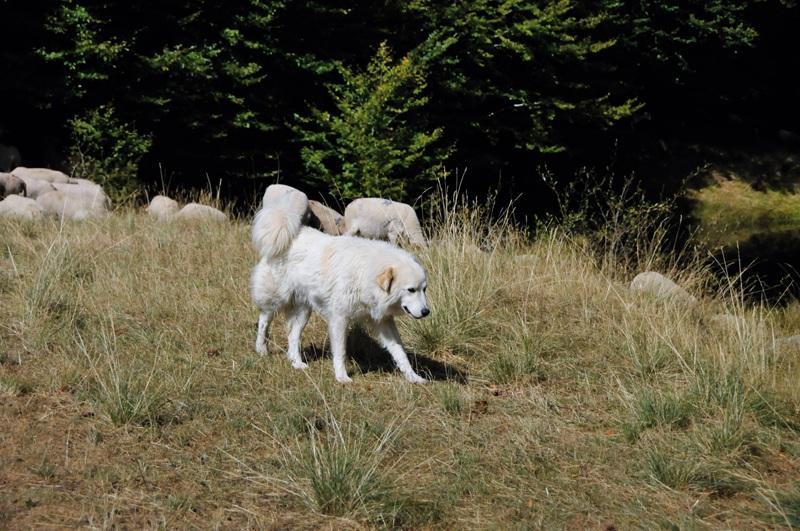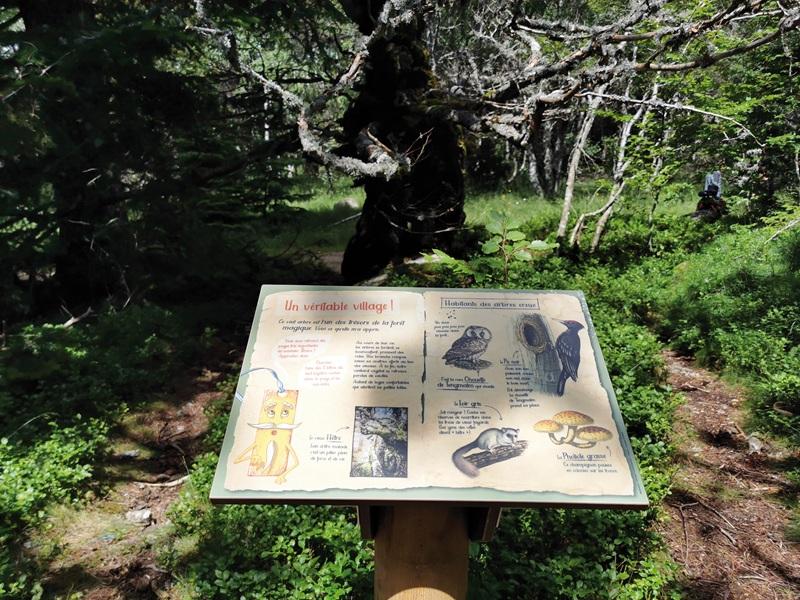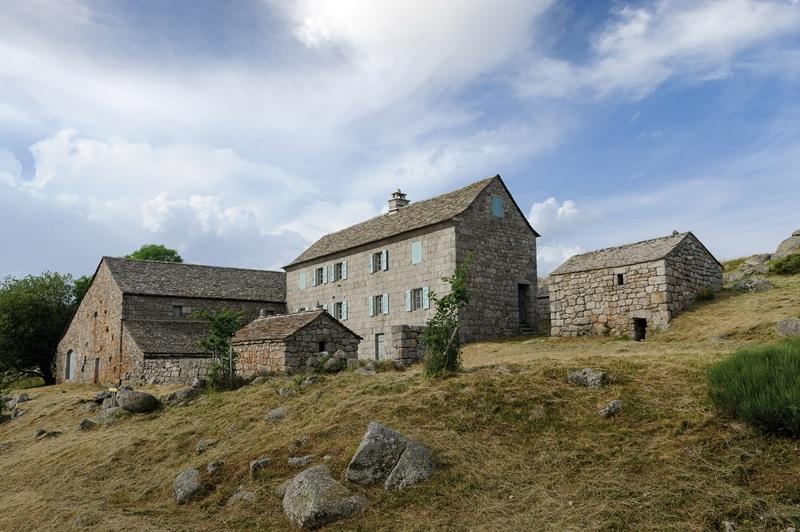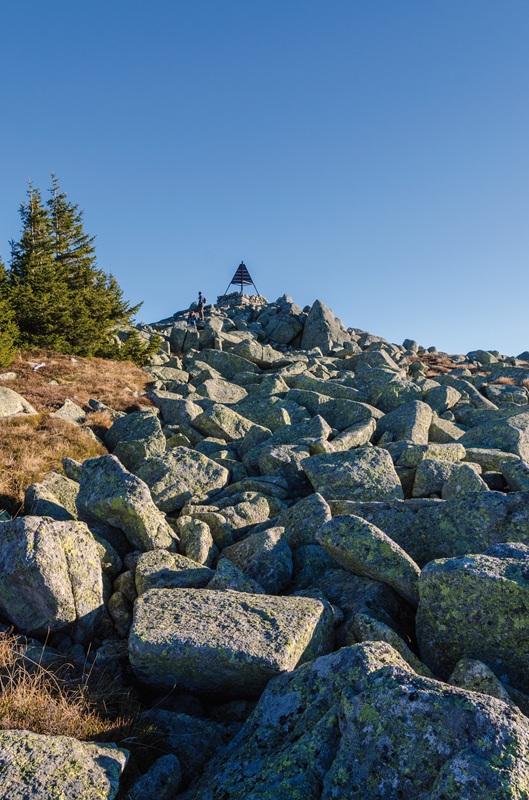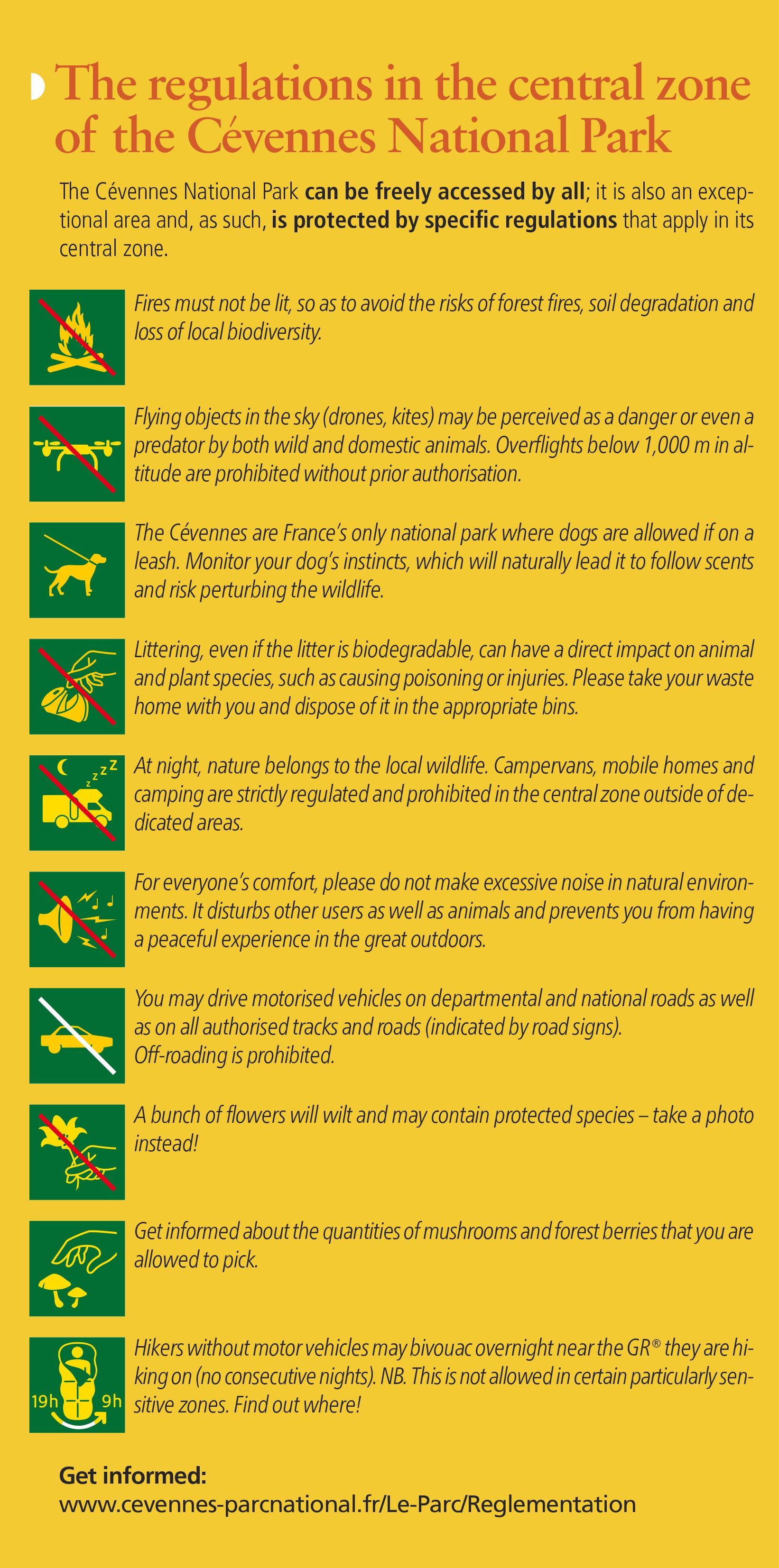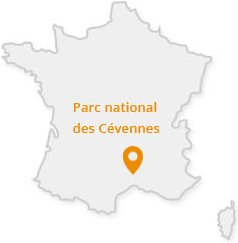Welcome to the Mas de la Barque, in the central zone of the Cévennes National Park
The Cévennes National Park is a protected natural area, renowned for the richness of its heritage. Recognised as an exceptional territory, its reputation extends across France and beyond.
The area was designated a UNESCO Biosphere Reserve in 1985 and is inscribed on the UNESCO World Heritage List for its living agropastoral landscapes.
- The exceptional quality of the Park’s night sky has also earned it the status of the largest International Dark Sky Reserve in Europe and one of the four largest in the world (IDSR, 2018).
The eastern part of Mount Lozère
Mount Lozère is an extension of the crystalline Margeride massif — a magnificent granite ridge entirely within the Cévennes National Park.
This plateau retains wide-open landscapes where fields and grasslands, crossed by small streams, spread across the lower slopes. The summits stretch for more than 25 kilometres, rising above 1,400 metres in altitude, dotted with alternating rocky cliffs and vast heaps of giant granite boulders — a hallmark of granite landscapes.
The imprint of human activity is deeply rooted in these landscapes. Situated between Mediterranean influences and a harsh continental climate, Mount Lozère harbours a flora with a distinctly alpine character.
The forest
It is made up of ancient beech woodland — a remnant of the vast forest that once covered the massif before the major clearances of the Middle Ages — and of more recent woodland, mostly replanted by the forestry administration to protect the soil from erosion.
It shelters rich biodiversity, including Tengmalm’s Owl (Aegolius funereus) and the Black Woodpecker (Dryocopus martius), which have recolonised the massif. Many more discreet species also thrive here — such as mosses, lichens and a wide variety of insects.
Water
Mount Lozère has a rich hydrographic network, including the Tarn River, which has its source here. The area is also remarkable for its high density of wetlands and upland peat bogs.
These wetlands play a vital role in the proper functioning of ecosystems, as well as in human activities. They help reduce flooding, maintain water quality through their natural filtering capacity, lessen the effects of droughts and heatwaves, and store carbon.
They also provide habitat for highly specialised flora and fauna, such as the Round-leaved Sundew (Drosera rotundifolia), a carnivorous plant; the Viviparous Lizard (Zootoca vivipara); the Blood-red Grasshopper (Omocestus haemorrhoidalis); the Adder (Vipera berus); and the Black Darter (Sympetrum danae), a species of dragonfly.
Pastoralism
A traditional summer grazing land, Mount Lozère is shaped by pastoralism — the use of natural, spontaneous vegetation to feed livestock.
The transhumance of sheep is still practised on foot and is celebrated each year during the ascent to the summer pastures. The sedentary herds are mainly made up of Aubrac cattle.
The Cévennes National Park authority supports transhumant herders, notably by providing land and pastoral huts.
Pastoralism helps to maintain open habitats that are home to many species, such as the Large Marsh Grasshopper (Stethophyma grossum), the Short-toed Snake Eagle (Circaetus gallicus), and the Yellow Gentian (Gentiana lutea). It is also an important migration area for certain birds, including the Eurasian Dotterel (Charadrius morinellus).
How to behave around livestock guardian dogs
Livestock guardian dogs can sometimes seem intimidating and dislike being surprised. Before setting out, check with local tourist offices or Cévennes National Park visitor centres to locate grazing areas.
If you encounter a flock, a few simple tips will help you avoid any problems:
• Keep your distance.
• Walk around the grazing area and the animals.
• Do not try to pet the guardian dog or any sheep.
• Avoid sudden movements, running, or using stones or sticks to drive the dog away.
If you have a dog, do not approach the grazing area, even if your dog is on a lead.
A place to discover… at your own pace!
On foot, on horseback, by bike, with a donkey, on cross-country skis or trail running — there are many ways to enjoy the beauty of these landscapes in every season. Take time to soak up the spirit of the place, and above all, meet the local people who are always happy to share their culture.
Here, three nearby walks are sure to amaze you :
1- Discovering the Enchanted Forest
Around the forest of the Mas de la Barque, follow “Barque Page”, a mysterious character on a quest to uncover the secrets of an ancient forest.
Along this discovery trail, explore the rich natural and cultural heritage of this fascinating world through eight themed stops.
2 - Mas Camargues
This farmhouse, with its remarkable architecture, marks the starting point of a trail that immerses visitors in the unique atmosphere of the Haut Tarn plain — a journey through one of the emblematic landscapes of agropastoralism.
3 - Pic Cassini
This trail leads to the second highest peak in Lozère — Pic Cassini (1,680 m).
At the summit, a breathtaking 360° panorama awaits you, offering views over Mount Lozère, stretching all the way to the Mediterranean coast and even to the Alps!
Find all the information about these three trails on our website:
https://destination.cevennes-parcnational.fr/en
Regulations in the central zone of the Cévennes National Park
Download our visitor brochure to discover Cévennes National Park.




